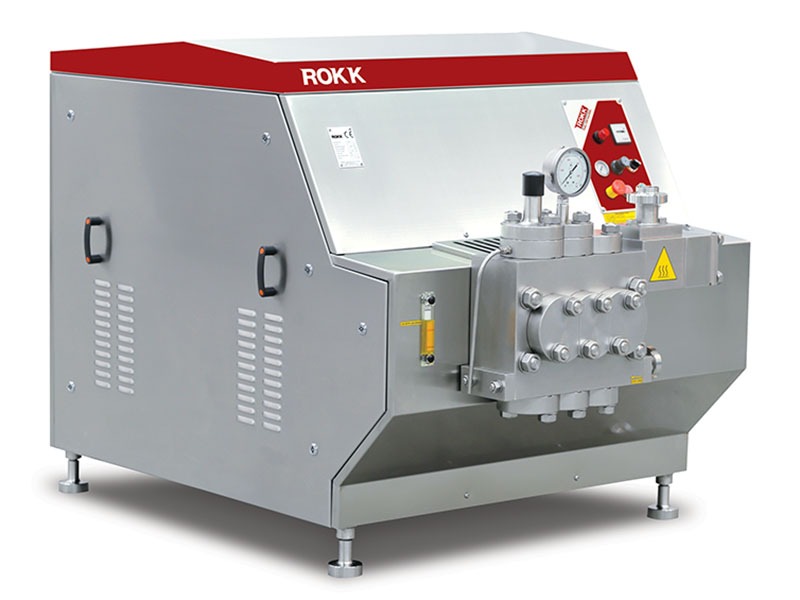What role does a high pressure piston homogeniser play in producing high-quality dairy, food, and beverage products? Product consistency, enhanced shelf life, and scalable efficiency are essential in modern manufacturing. Homogenisation technology enables manufacturers to meet these demands through advanced fluid processing.
This blog explores the industrial applications of the high pressure piston homogeniser, focusing on how it supports dairy, food, and beverage production. From optimizing texture in milk to stabilizing emulsions in sauces and drinks, this equipment has become a core part of reliable, high-capacity operations. We'll examine how it works, why it's used, and how current models meet evolving production needs.
Applications in Dairy Processing
One of the most common uses for a high-pressure piston homogeniser is in dairy manufacturing. Milk, cream, and yogurt all benefit from homogenisation, which prevents cream separation and ensures uniform fat distribution. By using controlled, repeatable pressures and optional single—or double-stage valves, dairy processors can produce milk with a smooth mouthfeel and longer shelf life.
Homogenised milk appeals more to consumers due to its stable appearance and performs better during pasteurisation and packaging. In addition, the process plays a critical role in producing flavored milk, dairy beverages, and fermented products by improving ingredient dispersion.
Homogenisers designed with stainless steel frames, automatic pressure adjustment, and hygienic valve systems help maintain clean-in-place (CIP) protocols and meet sanitary requirements for dairy operations.
Enhancing Food Product Quality
Beyond dairy, the high pressure piston homogeniser is vital in the broader food industry. It is widely used to manufacture sauces, soups, condiments, and dressings where emulsion stability is essential. Homogenisation improves consistency, enhances mouthfeel, and ensures that oils and solids remain evenly suspended in liquid bases.
These systems are also valuable in the production of baby food, spreads, and plant-based alternatives. Because food processors work with both low- and high-viscosity products, homogenisers must offer reliable control across variable pressures. Equipment that features stainless steel compression heads, adjustable flow rates, and durable plunger mechanisms allows processors to handle diverse product types without performance loss.
The hygienic design, precise pressure regulation, and ability to operate at up to 250 bar make this equipment ideal for maintaining product uniformity in high-volume food production settings.
Supporting Beverage Manufacturing
In beverage applications, a high pressure piston homogeniser helps stabilize particles and extend shelf life. Juice products, energy drinks, and non-dairy beverages benefit significantly from particle reduction and homogenization, which prevents sedimentation and promotes an even appearance.
In carbonated drinks or vitamin-enriched beverages, homogenisation plays a role in preventing separation of active ingredients. Homogenized liquids' improved bioavailability and flavor dispersion lead to better consumer satisfaction and more efficient product performance.
Beverage producers often require equipment that balances throughput with precision. Machines with a compact footprint, such as units measuring 940 mm in width and 1,650 mm in depth, can integrate easily into existing production lines without requiring extensive reconfiguration.
Process Efficiency and Operational Benefits
Manufacturers rely on the high pressure piston homogeniser for both performance and process consistency. Systems designed with forged stainless steel monoblock heads reduce dead zones and allow for ultrasonic crack detection during maintenance. With V-belt-driven AC motors and mechanical gearbox assemblies, these machines maintain optimal speeds while limiting energy use.
Water consumption is also managed efficiently, typically around 60 liters per hour, which supports sustainability goals in energy-conscious facilities. Sanitary valves and ANSI flange designs make easy maintenance possible, allowing teams to maintain equipment without extensive downtime.
Moreover, automatic or manual pressure control options, analog high-pressure gauges, and double-stage homogenisation provide flexibility to meet different processing demands across production environments.
Conclusion
In summary, the high pressure piston homogeniser is a critical asset in the dairy, food, and beverage industries. It enables producers to improve texture, stability, and product appearance while maintaining high efficiency and consistency across batches. This equipment ensures that every product meets consumer expectations and industry quality standards by reducing particle sizes and evenly distributing components under controlled pressure.
Whether used in milk processing, emulsified sauces, or stabilized beverages, the high-pressure piston homogeniser enhances both the production process and the final product. Its robust construction, sanitary design, and adaptability to various product viscosities make it an ideal choice for manufacturers aiming to meet growing market demands confidently.





Comments